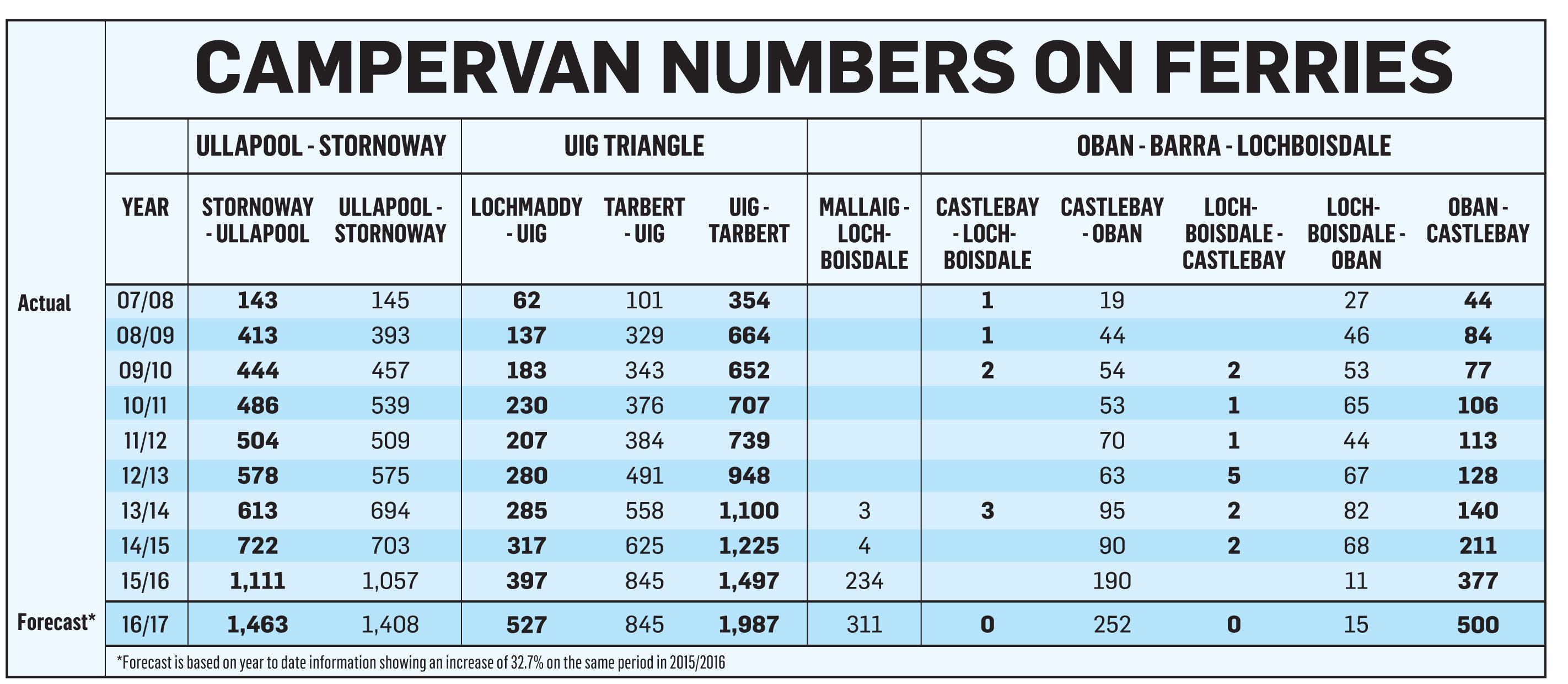The soaring number of campervans travelling to the Western Isles has prompted a call for a new “motorhome levy”.
Local MSP Alasdair Allan, who is also Scotland’s minister for international development and Europe, has raised the controversial idea after highlighting a near tenfold rise in campervan numbers on the Outer Hebrides.
And he has written to his SNP colleague Humza Yousaf, minister for transport and the islands, to ask for the tax to be considered.
The move follows a controversy on Skye this summer after it was suggested that a “tourist tax” be introduced to help the island’s infrastructure cope with the rising number of tourists.
Community surveys reveal massive pressures on popular part of Skye
Just this week, the Glendale Community Council on Skye revealed the results of its own traffic survey which showed that an extra 300,000 vehicles a year are using their crumbling single track road.
Mr Allan said: “It has been a fantastic thing for our local economies in the Western Isles that we have had record numbers of tourists visiting here and enjoying our island hospitality.
“However, this success has brought its own set of problems and it is readily apparent that our infrastructure has not been able to keep up with demand.
“The numbers of motorhomes using island ferry routes has shot up nearly tenfold over the last decade and issues associated with motorhomes have been repeatedly brought up.
“There is a lack of suitable sites for them, a lack of waste disposal units and the extra space that they require on the ferries has contributed to the capacity problems we have seen over the summer.
“Motorhomes play an important part in our tourist economy and this should not be about making motorhome visitors feel unwelcome. They are welcome.
“This is about recognising the pressures created on infrastructure by such a rapid growth in tourism and providing communities with a new source of funding that they can direct as they see fit.”
Mr Allan said the level of tax paid should be decided in consultation with local communities and stakeholders.
Western Isles Council leader Roddie MacKay said the local authority had “started working on a tourism infrastructure” strategy that would help “get places for them to park up and service their motor homes”.
He added: “We welcome tourists, but there has to be a way of developing the infrastructure and there has to be a means of funding that.”
Donald Murdie, secretary of Skye’s Glendale Community Council, said: “Personally I think it would be a good idea. There is basically no infrastructure for campervans on Skye.
“I would say that throughout the Highlands there should be some sort of contribution being made by the hirers of the campervans to provide infrastructure.”
A spokesman for Transport Scotland said: “We are mindful of the increased demands on ferry services given the affordability of travel following the full roll out of Road Equivalent Tariff (RET) in the Western Isles.
“The reduction of fares to RET levels has had a positive impact on island communities, boosting local tourist trade and local economies.
“We want to see this continue, however we are aware that there have been some challenges for those wishing to travel to and from remote and island communities.
“Along with operators, we will continue to monitor Scotland’s ferry services and frequently review service provision to and from the islands, including all options in regard to demand management measures.”
